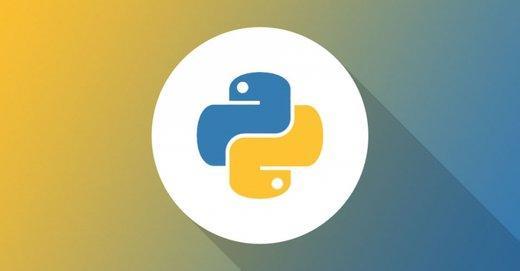
一.c,ctypes和python的数据类型的对应关系
- ctypes type ctype Python type
- c_char char 1-character string
- c_wchar wchar_t 1-character unicode string
- c_byte char int/long
- c_ubyte unsigned char int/long
- c_short short int/long
- c_ushort unsigned short int/long
- c_int int int/long
- c_uint unsigned int int/long
- c_long long int/long
- c_ulong unsigned long int/long
- c_longlong __int64 or long long int/long
- c_ulonglong unsigned __int64 or unsigned long long int/long
- c_float float float
- c_double double float
- c_char_p char * (NUL terminated) string or None
- c_wchar_p wchar_t * (NUL terminated) unicode or None
- c_void_p void * int/long or None
2.操作int
- >>> from ctypes import *
- >>> c=c_int(34)
- >>> c
- c_int(34)
- >>> c.value
- 34
- >>> c.value=343
- >>> c.value
- 343
3.操作字符串
- >>> p=create_string_buffer(10)
- >>> p.raw
- '\x00\x00\x00\x00\x00\x00\x00\x00\x00\x00'
- >>> p.value='fefefe'
- >>> p.raw
- 'fefefe\x00\x00\x00\x00'
- >>> p.value='fefeeeeeeeeeeeeeeeeeeeeeee' #字符串太长,报错
- Traceback (most recent call last):
- File "<stdin>", line 1, in <module>
- ValueError: string too long
4.操作指针
- >>> i=c_int(999)
- >>> pi=pointer(i)
- >>> pi
- <__main__.LP_c_int object at 0x7f7be1983b00>
- >>> pi.value
- Traceback (most recent call last):
- File "<stdin>", line 1, in <module>
- AttributeError: 'LP_c_int' object has no attribute 'value'
- >>> pi.contents
- c_int(999)
- >>> pi.contents=c_long(34343)
- >>> pi.contents
- c_int(34343)
- 通过pointer获取一个值的指针
- 通过contents获取一个指针的值
5.c的结构体
- #定义一个c的structure,包含两个成员变量x和y
- >>> class POINT(Structure):
- ... _fields_=[('x',c_int),('y',c_int)]
- ...
- >>> point=POINT(2,4)
- >>> point
- <__main__.POINT object at 0x7f7be1983b90>
- >>> point.x,point.y
- (2, 4)
- >>> porint=POINT(y=2)
- >>> porint
- <__main__.POINT object at 0x7f7be1983cb0>
- >>> point=POINT(y=2)
- >>> point.x,point.y
- (0, 2)
- 定义一个类型为POINT的数组
- >>> POINT_ARRAY=POINT*3
- >>> pa=POINT_ARRAY(POINT(2,3),POINT(2,4),POINT(2,5))
- >>> for i in pa:print pa.y
- ...
- Traceback (most recent call last):
- File "<stdin>", line 1, in <module>
- AttributeError: 'POINT_Array_3' object has no attribute 'y'
- >>> for i in pa:print i.y
- ...
- 3
- 4
- 5
6.访问so文件
1.创建一个c文件
- #include <stdio.h>
- int hello_world(){
- printf("Hello World\n");
- return 0;
- }
- int main(){
- hello_world();
- return 0;
- }
2.编译成动态链接库
- gcc hello_world.c -fPIC -shared -o hello_world.so
3.python中调用库中的函数
- from ctypes import cdll
- c_lib=cdll.LoadLibrary('./hello_world.so')
- c_lib.hello_world()
二.测试c的性能和python的差别
sum.c
- int sum(int num){
- long sum=0;
- int i =0;
- for( i=1;i<=num;i++){
- sum=sum+i;
- };
- return sum;
- }
- int main(){
- printf("%d",sum(10));
- return 0;
- }
- 测试方案:计算1-100的和
- 测试次数:100万次
1. 直接用c来执行,通linux 的time命令来记录执行的用时
sum.c:
- #include <stdio.h>
- int sum(int num){
- long sum=0;
- int i =0;
- for( i=1;i<=num;i++){
- sum=sum+i;
- };
- return sum;
- }
- int main(){
- int i ;
- for (i=0;i<1000000;i++){
- sum(100);
- }
- return 0;
- }
测试结果的例子:
- real 1.16
- user 1.13
- sys 0.01
2.通过Python调用so文件和python的测试结果
sum_test.py:
- def sum_python(num):
- s = 0
- for i in xrange(1,num+1):
- s += i
- return s
- from ctypes import cdll
- c_lib = cdll.LoadLibrary('./sum.so')
- def sum_c(num):
- return c_lib.sum(num)
- def test(num):
- import timeit
- t1 = timeit.Timer('c_lib.sum(%d)' % num, 'from __main__ import c_lib')
- t2 = timeit.Timer('sum_python(%d)' % num, 'from __main__ import sum_python')
- print 'c', t1.timeit(number=1000000)
- print 'python', t2.timeit(number=1000000)
- if __name__ == '__main__':
- test(100)
测试结果的例子
- c 1.02756714821
- python 7.90672802925
3.测试erlang的测试结果
刚刚学了erlang,那就一起测试一下erlang的运算性能
sum.erl:
- -module(sum).
- -export([sum/2,sum_test/2]).
- sum(0,Sum) ->
- Sum;
- sum(Num,Sum) ->
- sum(Num-1,Sum+Num).
- sum_test(Num,0) ->
- 0;
- sum_test(Num,Times) ->
- sum(Num,0),
- sum_test(Num,Times-1).
调用:
- timer:tc(sum,sum_test,[100,1000000]).
测试结果的例子:
- {2418486,0}
4.测试结果
用上面的测试方法,进行10次测试,去除最大值和最小值,再计算平均值,得出:
单位:秒
- 求和的运行,使用的内存比较小,但是占用CPU资源比较多。
- 原生的C是最快的,Python调用c会稍微慢一点,原因是计算100的和的操作是在c里面做的,而执行100万次的逻辑是在python做的
- erlang的性能虽然比c稍慢,但是也是不错的,
- Python的运行效率惨不忍睹。。。
作者:佚名
来源:51CTO




